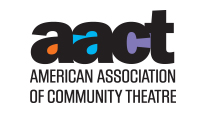Theatre Terms
 As a service to the theatre community, AACT provides over 1000 definitions of theatrical terms. Fully searchable, our glossary is helpful for technical staff, directors, actors, producers, or anyone wanting to better understand the inner workings of theatre.
As a service to the theatre community, AACT provides over 1000 definitions of theatrical terms. Fully searchable, our glossary is helpful for technical staff, directors, actors, producers, or anyone wanting to better understand the inner workings of theatre.
HOW TO SEARCH:
Click on a letter (A-Z) below to find terms beginning with the specified letter, OR enter a word in "Search for Term" OR search by entering a word in "Words in Definition." For example, entering the word "curtain" would display all words whose definition includes that word. (Note: If the A-Z or word search has been activated, it must be reset before using "Search for Term" or "Words in Definition." To reset the A-Z search: Click Here)
| Term | Definition | Link |
|---|---|---|
| PROMPT DESK | The control center of the show. The desk should contain most of the following: a clock, low level lighting, a flat surface for the prompt script, communication facility to other technical departments, a phone for emergency, rear and front of house calls system and cue light controls. | |
| PROMPTER | A person who is charged with prompting. | |
| PROP or PROPS | Short for "property." Furnishings, set dressings, and all items large and small which cannot be classified as scenery, electrics or wardrobe. Props handled by actors are known as hand props, props which are kept in an actors costume are known as personal props. | |
| Property | Usually shortened to "prop" or "props." See cross-reference link for more information. | Prop/Props |
| PROPPING | The task, usually performed by stage management, of finding, borrowing, buying props for the production. | |
| PROPS TABLE | Table in convenient offstage area on which properties are prepared prior to a performance and to which they should be returned after use. | |
| PROSCENIUM | The opening in the wall that stands between stage and auditorium in some theatres; the picture frame through which the audience sees the play. The "fourth wall." Also proscenium arch. | |
| PROSCENIUM STAGE | A stage framed by a proscenium arch. This is the most common type of stage (others include thrust and arena.) | |
| PUBLIC ADDRESS SYSTEM | The venue auditorium sound system. Usually shortened to "PA." | |
| PUBLISHER | More accurately, in most cases a publisher/agent. In many cases the publisher is also the representative through which one seeks a license. However, not all publishers are representatives (and not all representative are publishers). For example, Samuel French, Dramatists Play Service, I.E. Clark, and Music Theater International publish scripts and offer licenses. Book publishers such as Heinemann and Smith & Krause publish plays, but do not license productions. However, their books do include licensing information. | |
| PULL FROM STOCK | Retrieve scenic units, costumes, props, etc. from storage of a theatre company's stock from past productions for use in an upcoming production. | Stock Scenery |
| PUNCH LINE or PUNCHLINE | A line of dialogue that carries particular emphasis for dramatic or comic effect. In comedy, a series of lines build one on the other, leading to the final line that brings the big laugh--the punch line. | |
| PVC TAPE | Plastic insulating tape used for taping cables to bars and for securing coiled cables. Neater and cheaper than gaffer's tape. Also known as LX tape. | |
| Pyro | ||
| PYROTECHNICS | Chemical explosive or flammable firework effects with a manual detonation. Usually electrically fired with special designed fail-safe equipment. Types of pyro range from the Theatrical Flash (a flash and a cloud of smoke) to the Maroon (which produces a very loud bang). All pyrotechnics should be used with close reference to local licensing laws, and the manufacturers instructions. Most theatres require a professional, licensed pyrotechnician to be in charge. |




